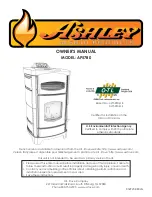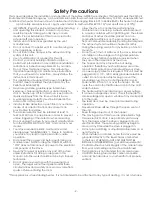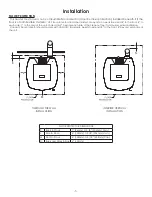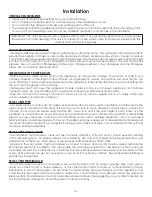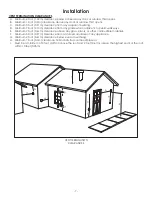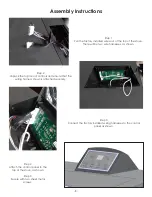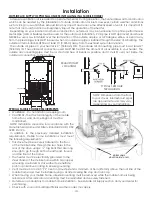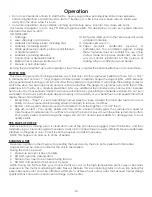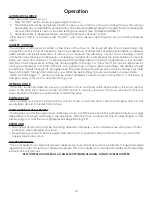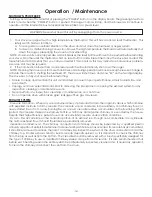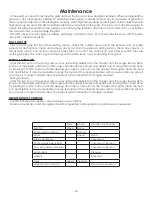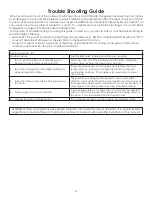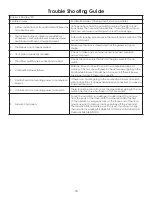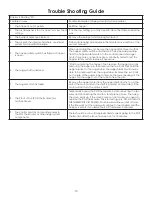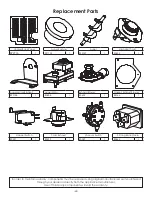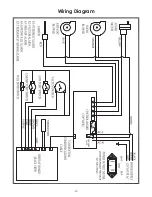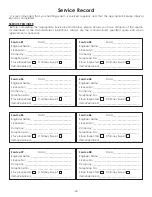
-
14
-
• Failure to clean and maintain this unit as indicated can result in poor performance, safety hazards, fire, and
even death.
• Unplug your stove’s electrical cord prior to removing the back panel or opening the exhaust system for any
inspection, cleaning, or maintenance work.
•
Never perform any inspections, cleaning, or maintenance on a hot stove.
• Do not operate stove with broken glass, leakage of flue gas may result.
EXHAUST SYSTEM
Creosote Formation – When any wood is burned slowly, it produces tar and other organic vapors, which combine
with expelled moisture to form creosote. The creosote vapors condense in the relatively cool chimney flue or a
newly started fire or from a slow-burning fire. As a result, creosote residue accumulates on the flue lining. When
ignited, this creosote makes an extremely hot fire, which may damage the chimney or even destroy the house.
Despite their high efficiency, pellet stoves can accumulate creosote under certain conditions.
Fly Ash – This accumulates in the horizontal portion of an exhaust run. Though non-combustible, it may impede
the normal exhaust flow. It should therefore be periodically removed.
Inspection and Removal – The chimney connector and chimney should be inspected by a qualified person
annually or per ton of pellets to determine if a creosote or fly ash build-up has occurred. If creosote has accumulated,
it should be removed to reduce the risk of a chimney fire. Inspect the system at the stove connection and at the
chimney top. Cooler surfaces tend to build creosote deposits quicker, so it is important to check the chimney
from the top as well as from the bottom. The creosote should be removed with a brush specifically designed for
the type of chimney in use. A qualified chimney sweep can perform this service. It is also recommended that
before each heating season the entire system be professionally inspected, cleaned and, if necessary, repaired.
To clean the chimney, disconnect the vent from the stove.
Operation / Maintenance
SHUTDOWN PROCEDURE
Turning your stove off is a matter of pressing the “POWER” button on the display board. The green light will turn
back to red when the “POWER” button is pushed. The auger motor will stop, and the blowers will continue to
operate until the internal firebox temperatures have fallen to a preset level.
1.
Your stove is equipped with a high temperature thermodisc. This unit has a manual reset thermodisc. This
safety switch has two functions.
A. To recognize an overheat situation in the stove and shut down the fuel feed or auger system.
B.
In case of a malfunctioning convection blower, the high-temperature thermodisc will automatically shut
down the auger, preventing the stove from overheating.
NOTE: On some units, once tripped, like a circuit breaker, the reset button will have to be pushed before restarting
your stove. On other units the thermodisc has no reset button and will reset itself once the stove has cooled. The
manufacturer recommends that you call your dealer if this occurs as this may indicate a more serious problem.
A service call may be required.
2. If the combustion blower fails, an air pressure switch will automatically shut down the auger.
NOTE: Opening the stove door for more than 30 seconds during operation will cause enough pressure change to
activate the air switch, shutting the fuel feed off. The stove will shut down and show “E2” on the two digit display.
The stove has to fully shut down before restarting.
WARNING: Never shut down this unit by unplugging it from the power source.

